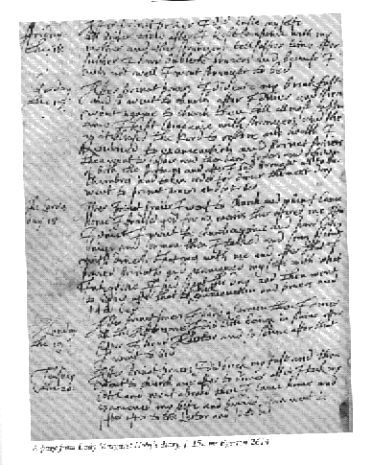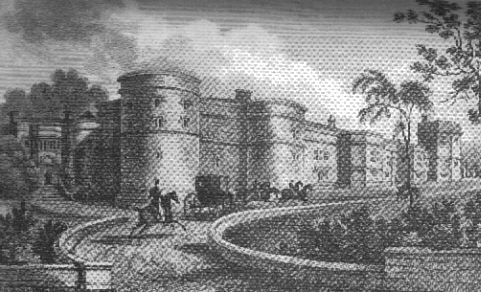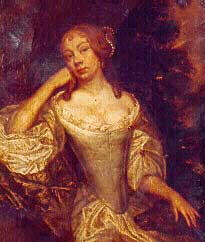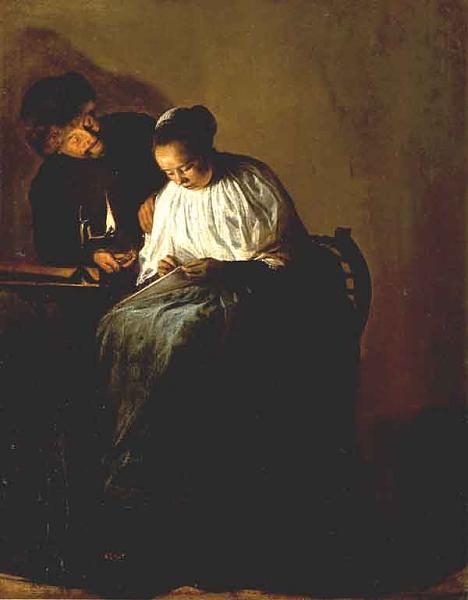

A Review of Sharon Cadman Seelig, Autobiography and Gender in Early Modern Literature: Reading women's lives 1600-1690. Cambridge University Press, 2006. 214 pp. $60.37 0 521 85695 7.
In this stimulating study, Seelig describes the disparate forms many women's autobiographies have taken, and suggests that since most women have been unable to preserve their texts from censorship or destruction, we read them from unfettered standpoints (7, 11, 15, 73, 92). She devotes a chapter to each woman: Margaret Hoby (Chapter One), Anne Clifford (Two), Lucy Hutchinson (Three), Ann Fanshawe (Four), Anne Halkett (Five), and Margaret Cavendish (Six).
Seelig intends her arrangement to leave what she thinks is an accurate impression: women autobiographers became more willing to present their lives and thoughts as important, and to look within themselves and write imaginative narratives shaped by their own agendas (157-158). As she herself makes clear though, the extant autobiographical texts of four of her six women (Hoby, Clifford, Hutchinson, Halkett) are censored portions of a corpus of texts much of which has been destroyed or not yet published. The first two and the last of the large folios in which Hoby wrote her diaries have been torn out (15-16). Clifford's extant papers suggest she wrote compulsively from the time she was very young to near the time of her death; the striking diary of 1616-1619 (where we see her struggle against violence as well as humiliation and neglect to hold onto her inheritance) is missing the year 1618 and extant only in 18th century copies (34-35). Hutchinson's powerful and moving elegies on her husband's death, imaginative, and strongly self-centered texts (which doubt Providence's presence and justice) have not yet been published in book form. In the case of known published remnants of devotional texts, revealing women whose sexuality, outward behavior, and thoughts are controlled by conventional piety and regard for the family's aggrandizement and respectability, we have an unrepresentative basis for inference.

Fanshawe and Cavendish's uncut women's memoirs are strongly compromised. Seelig refers to studies that demonstrate Cavendish's representation of herself as having no sexual knowledge or ability to manipulate was a calculated maneuver, and that Cavendish strictly followed her husband's decree that anything that could create trouble from living individual people or be construed as overtly political be omitted (190n.8). She then reveals Cavendish's autobiography is a continuously defensive and self-contradictory text (133-145). Like other recent scholars, Seelig does not acknowledge the limitations of Fanshawe's understanding, even though in Fanshawe's text itself, the gap between Fanshawe's grasp of what was happening and her husband's attitude towards her and his outlook is self-evident (and born out by reading his poetry and letters). Seelig praises this memoir because Fanshawe presents behavior not stereotypically feminine: as girl Fanshawe was a tomboy; during the civil war she is "anything but passive in the experiences that befall her" and a "bold initiator of action" (95, 99, 100). Seelig urges the reader to validate the conventionally acceptable story this typical gentry woman "chooses to tell" (109); we should remember though that Fanshawe's memoir survived precisely because it is a record of "a life of success, and hardship, [a] strong history of [Fanshawe's] family and her place within it" (109).

Seelig's close readings of these texts and attempt to accept their conscious content as sufficient explanation for their existence and evidence for a full portrait produces useful insights where she sympathizes strongly with the way her subject presents herself: Margaret Hoby's restrained presentation of her life as unelaborated facts of daily virtuous work and religious practices; Anne Clifford's unashamed self-gratifying presentation of her hard-won victory and powerful later life; Cavendish's flamboyant fantasy, The Blazing World. She feels disappointed by Lucy Hutchinson's overt self-effacement and dismayed by Anne Halkett's partial revelation of her "vulnerable position" in the public sexual arena (81). Her analysis of Hutchinson's male-centered The Life of Colonel Hutchinson is brief and relies heavily on N. H. Keeble and Susan Cook (87-89, 181ns. 26, 31, 182n. 36). Hutchinson's autobiographical fragment is analyzed to show its conventional religious, romantic, and exemplary imagery (84-87).
Seelig does justice to Halkett's text's literary quality, introspection and, "strength and coherence of narrative line," and has profited from the Loftis's new edition of Joseph Bampfield's memoir (185n.9, 187n.18); however, since, like many scholars, she frames the text as a proto-romance (110-111. 186n.12) which anticipates later novels, except the heroine seeks to regain respectability (113), she read the Scottish parts of Halkett's memoir -- her close relationships with women as their -- -- companion, and life after marrying James Halkett-- -- -- less carefully and I found errors. Halkett did not rescue Charles and Mary Seton, Earl and Countess of Dunfermline (125), but an important pair of allies of Bampfield, also anathematized by Charles II, the Scots Presbyterian pro-royalist landowners with powerful connections, Lord Alexander and Lady Margaret Mackenzie Lindsay, Lord and Lady Balcarres. Halkett's closing details, which Seelig says "clog" the narrative (129), are part of another third of the original manuscript. The present memoir and the undamaged one did not simply end on a happy wedding day.
This is a book rich in details from, and suggestive strategies for reading, parlous significant early modern women's texts. For women excluded from public social hierarchies, and especially those which controlled what could get into print, manuscript writing still held out recreative possibilities for enacting longed-for social selves, anticipating novel-writing to come (Seelig, 156), the kinds of poetic genres women would make their own (e.g, friendship poems), and offer women a place to be and re-invent themselves and hope of becoming part of recorded public history. Students of book history (e.g. posthumous publication) and manuscript culture will find this a book worth reading. The obstacles and new findings and perspectives put before the researcher into early modern women's autobiographies are those of the researcher into unpublished manuscripts and manuscript circulation from the 16th down to our own era's uses of cyberspace.
Ellen Moody
George Mason University
